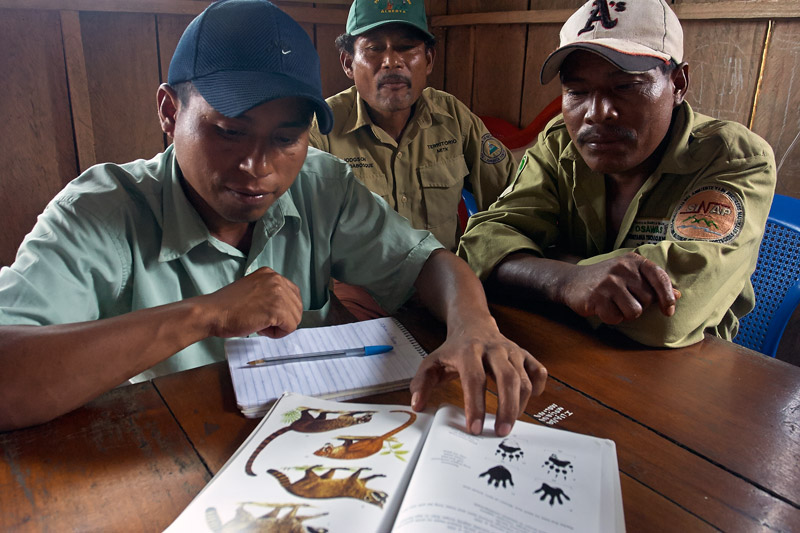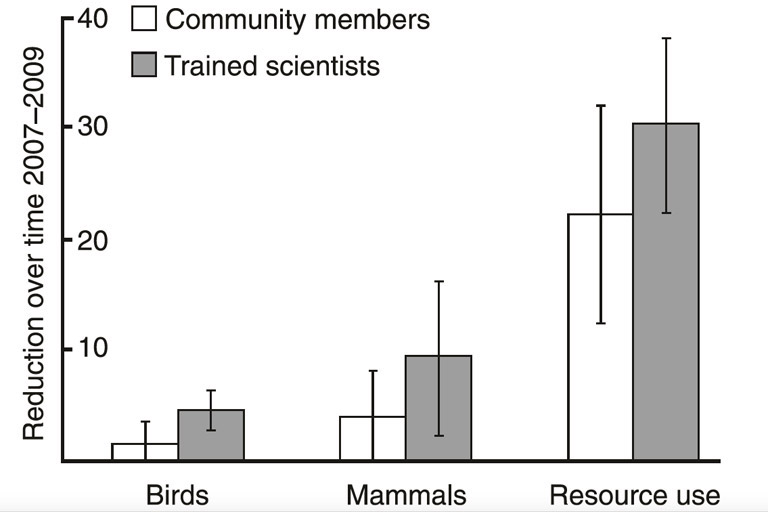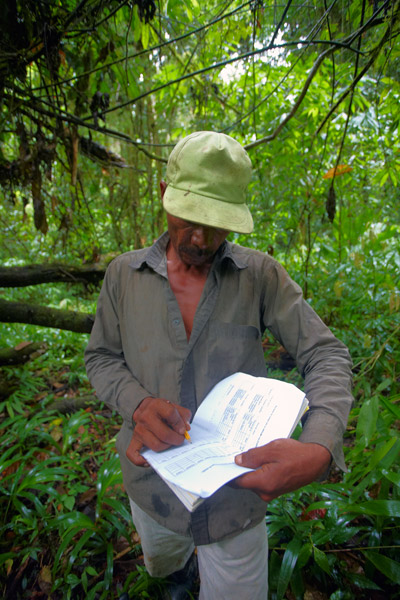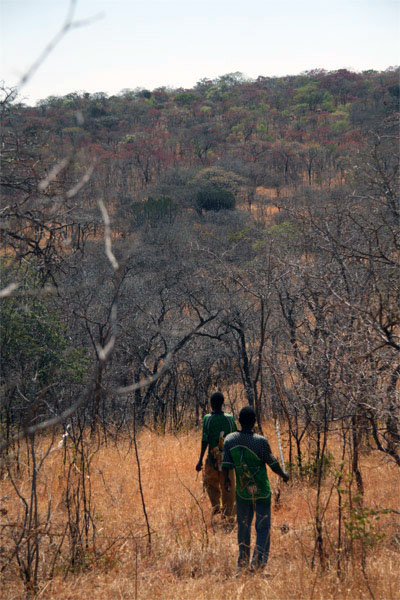- A recent study found that trained and motivated local people can accurately monitor their local environment just as effectively as trained scientists.
- The use of community volunteers is most effective when it highlights community benefits, data accuracy, and fosters wide community support.
- The study authors urge government and scientific agencies to implement training and programming in local communities as a cost effective alternative to expensive scientific surveys.
A recent study, published in BioScience, details successful efforts by local citizens to monitor natural resources, and finds that citizens do the job just as effectively as trained scientists. The study authors, inspired by these results, urge government and scientific agencies to implement training and programming in local communities as a cost effective alternative to expensive scientific surveys. The use of community volunteers is most effective when it highlights community benefits, data accuracy, and fosters wide community support, say the scientists.
Ecologist and co-founder of the Nordic Foundation for Development and Ecology, Finn Danielsen, says that although “many scientists believe non-literate community members cannot reliably monitor and manage natural resources, we show, in a rigorous fashion and across multiple countries, the considerable capacity of trained and motivated local people to accurately monitor their local environment.”
A multi-country study
“Our focus in this study was to compare resource abundance data collected by local community members with those collected by external scientists,” explains Danielsen. “Likewise, we focused on the information most relevant to natural resource management decisions, such as the status of and trends in [wildlife] abundance indices.”

The multi-country study, conducted over a period of roughly two-and-a-half years, from January 2007 through June 2009, analyzed the simultaneous work of scientists and community members as they gathered field data at 34 forest-monitoring sites in tropical Madagascar, Nicaragua, the Philippines and Tanzania. The parallel professional and non-professional monitoring groups included 7 university-trained scientists and 128 local people, mostly with no more than a primary-school education. All of the formally trained scientists included in the study possessed at least ten years of field experience and a Master’s degree in a natural science, while local community members received only two, to three days of field training.

In Nicaragua, community training was provided at the beginning of the present study, while in the other countries training was provided several years before. Training took place 9 years earlier in the Philippines, 5 years earlier in Tanzania, and 3 years before the study, in Madagascar. Nearly all the community participants were volunteers who received no payment.
The scientists and community forest monitors were assigned 68 targets to be monitored on foot patrols conducted at regular intervals, and divided into three classes: observations of birds (39 taxa), mammals (24 taxa), and five types of resource use.

A total of 24,881 hours of monitoring was conducted by both community members (19,183 hours) and trained scientists (5,698 hours), which yielded 5,804 paired records of the same natural resources between the two groups for comparison.
Scientist and community monitoring get similar results
While there were small differences in results between the local community monitoring systems and those of the professional scientists in the study, it was shown that the community members possessed the skills and knowledge to complete the task as well as scientists.
Encouragingly, the study found that “when there were only small differences in the route, area, and time of the surveys by community members and the trained scientists, the groups produced similar estimates.”
Full analysis of the data was conclusive: “Our findings suggest that in forest habitats in developing countries, community members with little or no formal scientific training, who have decided which natural resources should be monitored, can generate records of abundance estimates, relative trends, and the variation over time of natural resources, and resource uses, very similar to those of trained scientists,” says the paper.
So, if local communities can accurately monitor natural resources, as the study concludes, why aren’t there more such projects — especially in light of the significant savings in cost for field data gathering by local volunteers?

Danielsen and his team determined that the institutional infrastructure needed to facilitate local monitoring systems is often not available, and they speculate that this may be due to a “prevailing view among natural scientists that only well-educated ‘experts’ could monitor natural resources. Community members were widely viewed as ignorant and unreliable.”

Pointing to the successful community-based monitoring systems they observed in both Tanzania and the Philippines, Danielsen asserts that “ Our findings contribute to shifting the perspective in conservation management to allow more locals to take an active role. In most Tanzanian villages, monitoring results were being discussed on a monthly or bi-monthly basis, and 86 percent of respondents in interviews with 160 households said that they felt the monitoring benefitted their households. The respondents said the local monitoring helped in protection against encroachment on forest resources.”
Community involvement in tropical forest monitoring is worth the effort
Based on their results, the researchers urge that community-based forest-monitoring be implemented on a much wider and bigger scale.
The study acknowledges that implementing community based monitoring will require an up-front organized effort to provide training and materials to community members, as well as the creation of policies that ensure staff are working directly with communities so that funding is used properly.
“For local monitoring to be used in conservation management, there needs to be an institutional infrastructure that facilitates the monitoring,” says Danielsen. “Locally-based monitoring appears to be consistently cheap relative to the costs of management and of professional [scientist-executed] monitoring, even though the start-up costs can be high.”
If implemented correctly, as Danielsen suggests, community-based monitoring has the ability to positively influence conservation management on a large scale: “Involving community members in resource monitoring helps link that resource monitoring to decision making at the operational level and has the potential to become a major contributor to global conservation strategies.”

Citation:
Danielsen, F., Jensen, P., Burgess, N., Altamirano, R., Alviola, P., Andrianandrasana, H., Brashares, J., Burton A., Coronado, I., Corpuz, N., Enghoff, M., Fjelsda, J., Funder, M., Holt, S., Hubertz, H., Jensen, A., Lewis, R., Massao, J., Mendoza, M., Ngaga, Y., Pipper, C., Poulsen, M., Rueda, R., Sam, M., Skielboe, T., Sorensen, M., Young, R. (2014) A Mulitcountry Assessment of Tropical Resource Monitoring by Local Communities. BioScience, 64(3), 236-251.
